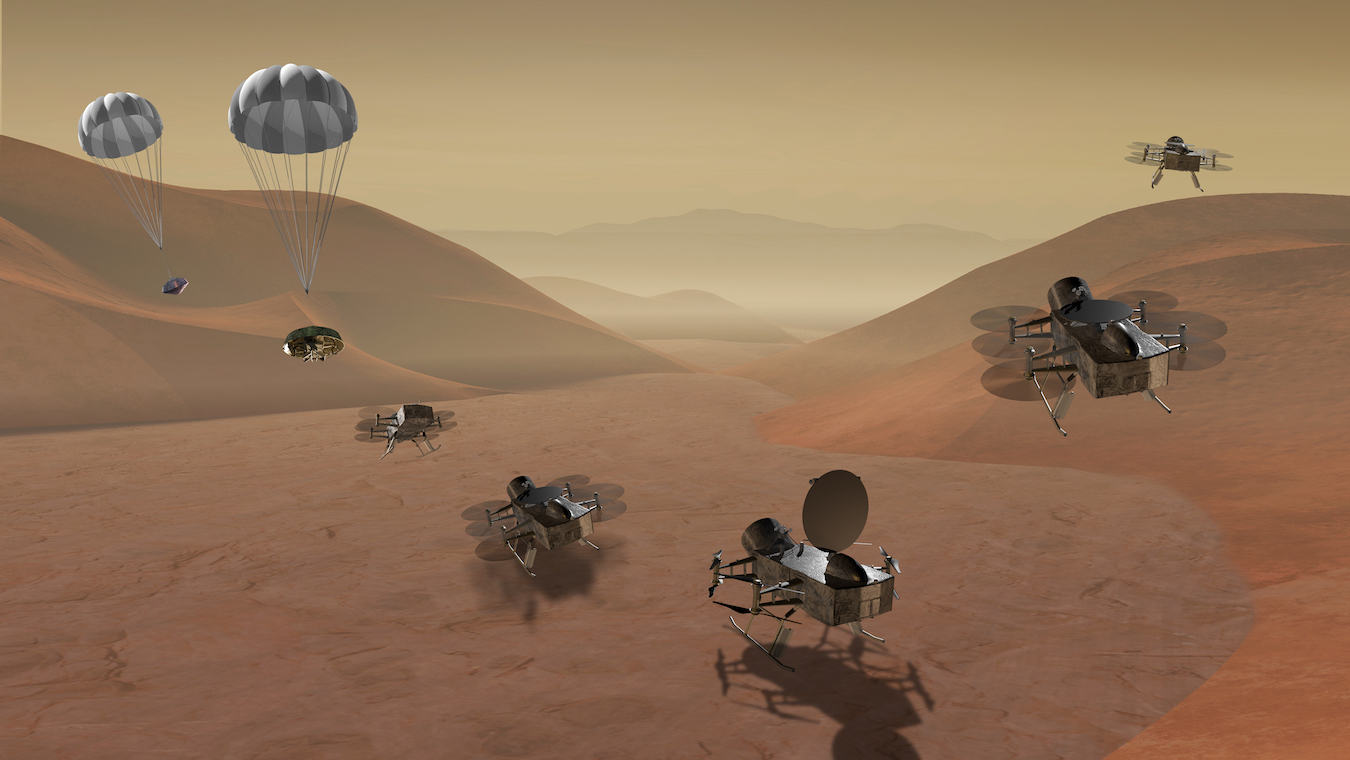
Wednesday was an exciting day for space exploration enthusiasts, as NASA announced the two finalist missions selected as part of its New Frontiers Program – a new robotic mission to be launched in the mid-2020s. The two winners are a sample return mission from a comet and a drone-like rotorcraft to further explore Saturn’s moon Titan. Other mission proposals which didn’t make the cut included a sample return mission from the Moon’s south pole, a new Venus lander, a Saturn atmospheric probe and a new Enceladus mission. However, two of those missions, for Enceladus and Venus, were selected for further technology development.
Of the two finalists, the Titan mission is almost certainly the most exciting. A drone-like rotorcraft called Dragonfly (how cool is that?) would explore dozens of different locations on the largest moon of Saturn. It could land in and then fly to locations up to hundreds of miles apart, focusing on studying the prebiotic and organic chemistry of this fascinating world. With a surface covered in organic material, rivers, lakes and seas of liquid methane/ethane and a subsurface ocean of water, Titan resembles Earth in a familiar yet alien way, and may even be capable of supporting some form of primitive life despite the extreme cold. The previous Huygens probe landed on Titan in 2005, but was much more limited in scope. Dragonfly would be able to fly to many different areas during its mission, unlike Huygens which remained in one spot.
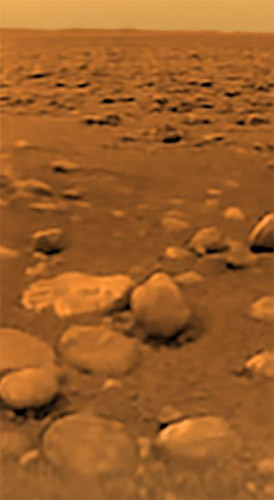
The Comet Astrobiology Exploration Sample Return (CAESAR) would return to comet 67P/Churyumov-Gerasimenko, which was previously visited by the European Space Agency’s Rosetta spacecraft. The main objective would be to further understand the origin and geologic history of the comet and comets in general. This time though, samples of the comet’s surface would be returned back to Earth. The mission would be led by Steve Squyres of Cornell University in Ithaca, New York, who is currently heading the ongoing Opportunity rover mission on Mars.
While not selected this time around, two additional mission concepts will receive additional technology development funds for future competitions.
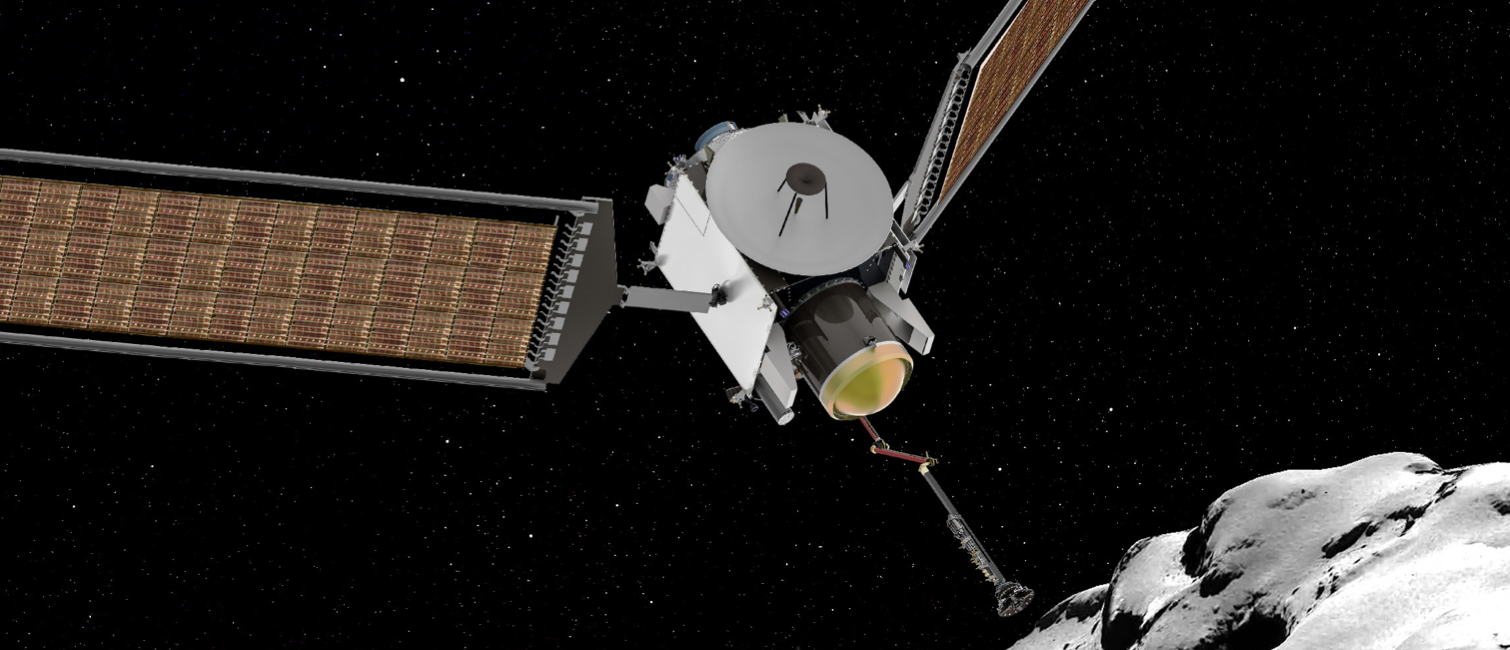
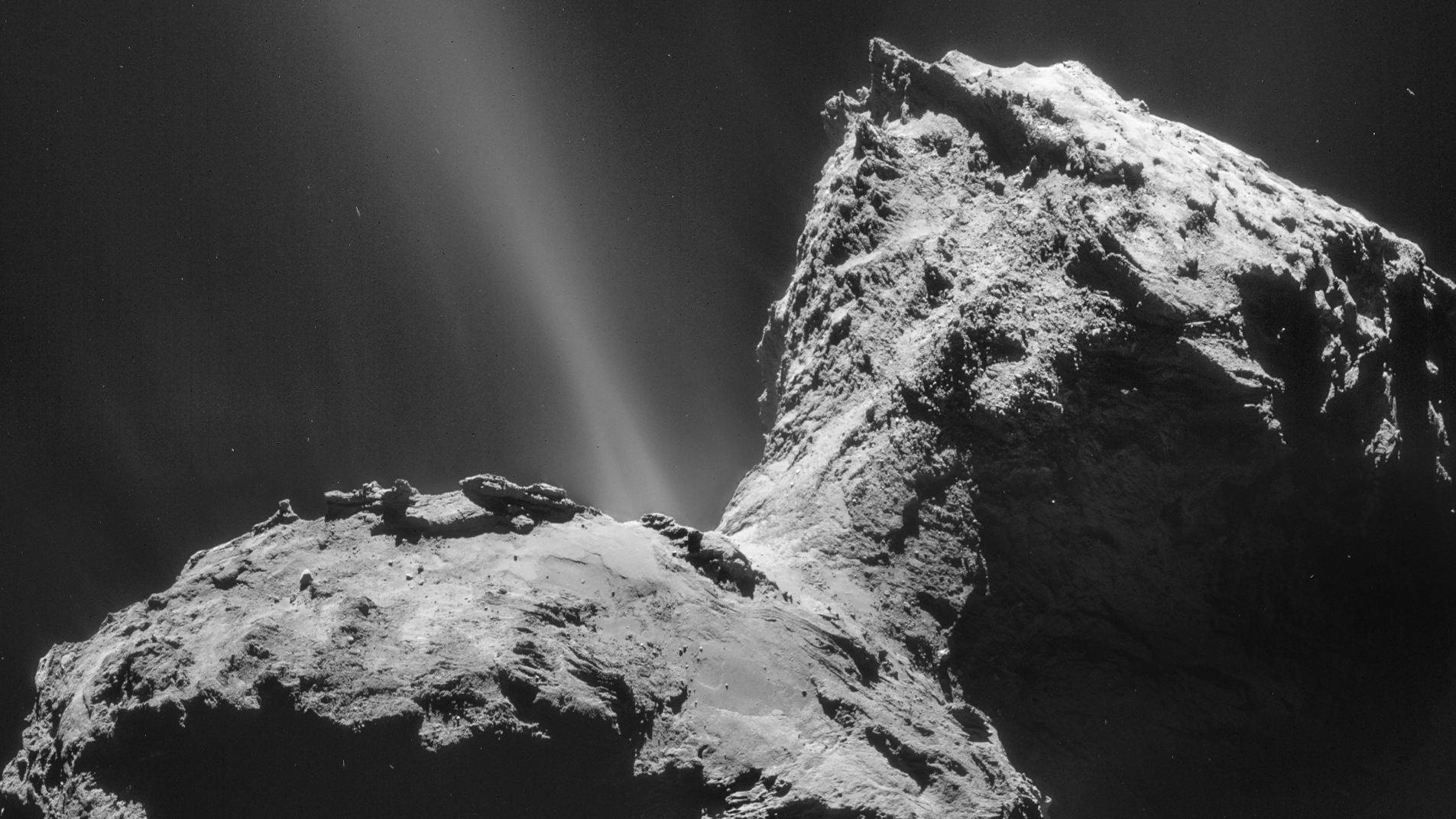
Enceladus Life Signatures and Habitability (ELSAH) would help equip a return mission to Saturn’s moon Enceladus to search for evidence of life in its subsurface ocean and water vapor geysers. Venus In situ Composition Investigations (VICI) would help to further develop the Venus Element and Mineralogy Camera to be used on a future lander which could survive longer than previous landers in the extremely harsh surface conditions of the planet.
An overview of all the various mission concepts is also available on The Space Review. More information about NASA’s New Frontiers Program is available here.
FOLLOW AmericaSpace on Facebook!
SaveSave




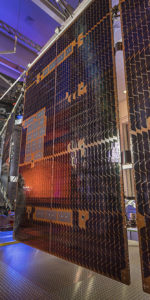
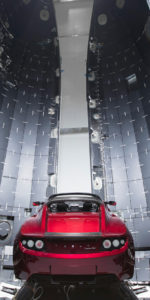
So exciting, fingers crossed for the down-select to go to Titan Quadcopter.
When I first heard “around the campfire” that APL was designing this mission, I was equally excited about what the science return could be from the carrier space craft (s/c). Turns out…sorry -none at all. Titan Quadcopter has no “carrier” orbiter s/c like the Vikings, Galileo or Cassini missions. Titan Quadcopter has a minimalist cruise stage which is similar in concept to NASA’s Mars rovers disposable cruise stages. Because of the distance to Saturn, the Titan Quadcopter’s small cruise stage won’t even have solar arrays like the Mars rovers stages, the stage will draw power from the Quadcopter’s RTG during the long cruise to Saturn.
Titan: the aviation Mecca of the Solar System, where the naked monkeys from the third rock can fly like a bird
Wanderers – a short film by Erik Wernquist
https://youtu.be/YH3c1QZzRK4